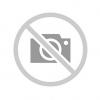124-I1-2
Displaying 1 - 4 of 4
| Catalog # | Name | Description | ||
|---|---|---|---|---|
| 1 | 2000.2.83 | Carving, ancestor | This is a rectangular wooden Asmat carving depicting three individuals, most likely ancestor figures. It is comprised entirely of unpainted dark wood which is very grainy. The bottom and top of the piece are similar bars of straight wood. The sides of the piece are framed in decorative hornbill beaks which connect with the bodies of the three depicted individuals. The bottom individual is in a seated position, with bent knees and elbows resting upon the knees. The two upper individuals are crouched above the bottom individual, with the right one standing upon the shoulders. The arms of the left upper individual are grasping the counterpart’s waist, while its hands are grasping at the elbows of the other. All three figures are of ambiguous biological sex, as they lack either the characteristic carved genitalia features. Ancestor worship plays an incredibly prominent role in Asmat society. The spirits of ancestors are commonly believed to inhabit the rainforests and the art pieces which depict them. Asmat artists carve the likeness of their ancestors into their works in order to call upon a variety of mystical enchantments or powers, such as protection in war, fertility, or good fortune. Ancestral carvings are often produced for events such as building dedications, ceremonial festivals, and funeral rites. After their primary function has been fulfilled, many carvings are discarded in the rainforests so that the spirits which inhabit them may rejuvenate the sago trees. Ancestral carvings are produced by the artist whose ancestors are depicted, making them of high personal value. |
 |
| 2 | 2000.2.95 | Spear | jointed and detachable. Part a. has intricate carving and openwork carving. 1 3/4" shallow barbs proceed narrowing point. Part b.half of surface coverd with string (circled & knotted), line of beads attached to one edge. Fifteen feather groups attached to bead edge with string. Color: BR,RD,BK,WH |
 |
| 3 | 2007.3.0002 | Mask | Male Songye kifwebe mask. Black, white, and brown stripes on front. Large sagittal crest. Slitted eyes, rectanular mouth, beard attached. Shells decorate hair of mask. Nose has damage at end. Paint flaking, most of red paint is gone. Beard and hair costume are falling out. Shells are very loose and fragile. Wood stained and discolored from use. Rope holding raffia is frayed and worn. Color: BR, BK, WH, RD |
|
| 4 | 2008.4.0001 | Mask | Dark brown wood mask with oval face with raffia. Small eye holes. Horns protrude from top of the mask. Eyebrow area protrudes. Nose triangular. Neck area is carved into four bands. Long beak; open mouth. Raffia attatched around top of mask with varying lengths of raffia. Scrapes and wear on the beak area, nose worn smooth of pigment. Crack on right side of beak near neck. Repaired crack along bottom of beak. Inside portion of lower beak reattatched. Mask attached to stand by donor. Raffia not original per donor. Color: BR, TN |
 |
